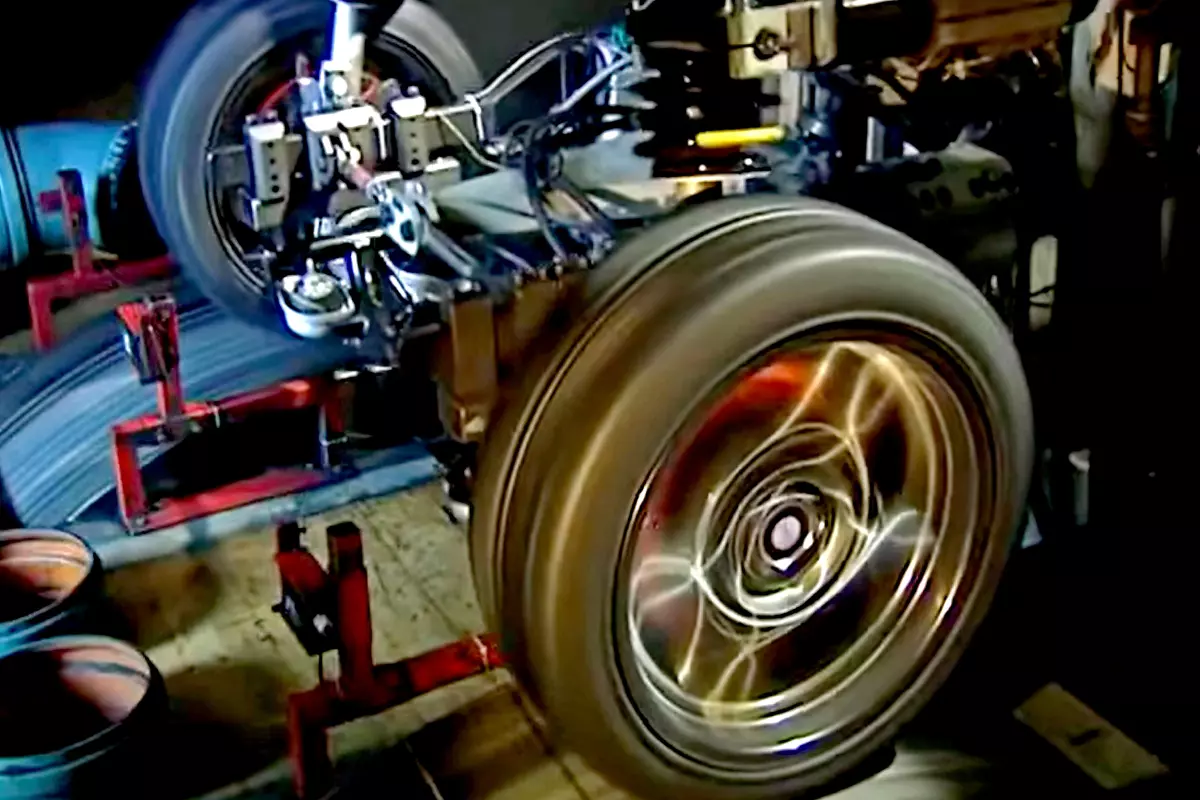About 20,000 components to every single BMW on the road today get put to the extreme test well beyond real-world expectations. Then again, sometimes a not-your-average-driver does subject their BMW to the same grueling conditions, like taking their M5 to Nürburgring Nordschleife for some fun weekend driving.
Decades ago, BMW was the first company to start recording data from each of its models from the world-famous Nordschleife course, a punishing, high-speed 12.94-mile (20.83-km) loop in Germany.
But the company's M5 E39, produced from 1998 through 2003, was also one of the first machines developed using extreme robotic testing. It may have looked like an unassuming family sedan, but the E39 was a bit of a beast in its day. It was the first M5 to sport a hefty V8 engine packing 394 hp (294 kW) with 369 lb-ft (500 Nm) of torque.
It also rocked all-aluminum front suspension, and was the very first BMW to feature the Servotronic steering system, which adjusted steering input effort depending on what speed the car was moving. The E39 had an electronically limited top speed of 155 mph (250 km/h). Unrestricted it could do 186 mph (299 km/h) with enough runway.
Chris Bangle, BMW's chief of design at the time, said that the E39 M5 aimed to be "the perfect balance between power, elegance, and everyday usability."
In an ideal world, perhaps, BMW would have tested this machine daily and enthusiastically on the Nürburgring Nordschleife – but that's hardly practical, given the secrecy of new car development, the hugely variable weather, and the other traffic on the 'ring.
So the team developed a Nordschleife-simulating test rig, where the chassis could be put through a meticulously-captured dynamic lap situation, supplying its own power, braking and turning forces. Here, the car could be subjected to high stresses and artificially applied G-loads over and over for as long as the engineers wanted, without putting test drivers into perilous situations.

BMW programmed this fatigue-testing machine using recorded data from previous real-world laps at Nordschleife to replicate every aspect of the road course. From the 33-degree hard banking 'Carousel' to the flat-out throttle-pinned 1.5-mile (2.4-km) straight known as 'Döttinger Höhe,' the rig would beat the tires, suspension, and steering components to the limit.
BMW figures that every one mile on the harsh simulator equals about 20 miles of real-world "normal" driving, in terms of its effect on the car. Two weeks of 24/7 nonstop simulator fatigue-testing therefore equates to about 186,000 road miles, sure to shake out any potential design issues.
The basic principles of fatigue testing haven't changed much in the last 50 years, but the technology to perform these tests has advanced significantly. Considering vehicles can have millions of cycles on each component – and recalls potentially costing BILLIONS of dollars – it's crucial that auto manufacturers get it right the first time before releasing vehicles to the public.
In the last decade alone, Ford Motor Company recall-related expenses have topped US$20 billion. Ouch.
This type of proprietary vehicle testing equipment is generally a well-guarded secret, so it's a rare glimpse of it in action, even if it is several decades old.
Sparks flying and glowing rotors... There's a lot to love here! Be sure you have your volume up as you watch this!
Source: Valley Auto World




